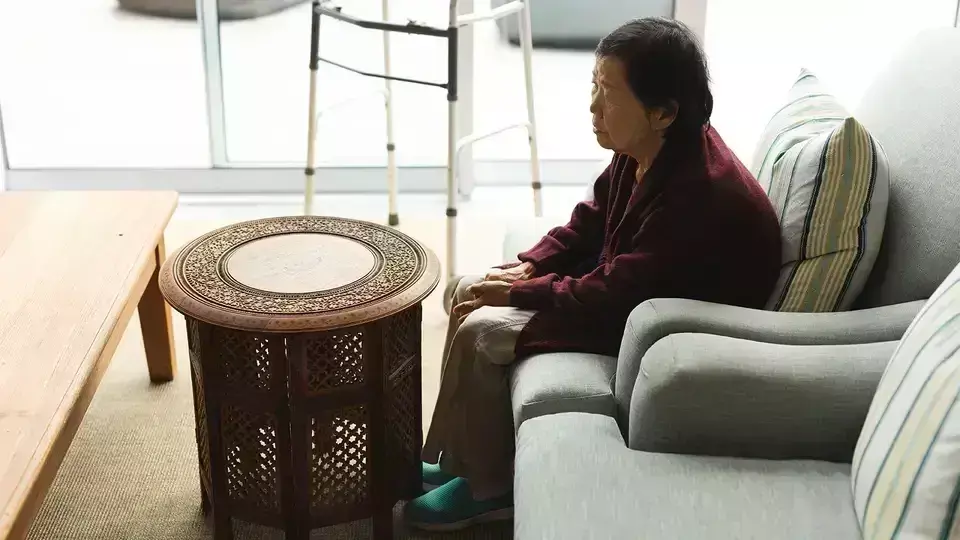- Home
- Medical news & Guidelines
- Anesthesiology
- Cardiology and CTVS
- Critical Care
- Dentistry
- Dermatology
- Diabetes and Endocrinology
- ENT
- Gastroenterology
- Medicine
- Nephrology
- Neurology
- Obstretics-Gynaecology
- Oncology
- Ophthalmology
- Orthopaedics
- Pediatrics-Neonatology
- Psychiatry
- Pulmonology
- Radiology
- Surgery
- Urology
- Laboratory Medicine
- Diet
- Nursing
- Paramedical
- Physiotherapy
- Health news
- Fact Check
- Bone Health Fact Check
- Brain Health Fact Check
- Cancer Related Fact Check
- Child Care Fact Check
- Dental and oral health fact check
- Diabetes and metabolic health fact check
- Diet and Nutrition Fact Check
- Eye and ENT Care Fact Check
- Fitness fact check
- Gut health fact check
- Heart health fact check
- Kidney health fact check
- Medical education fact check
- Men's health fact check
- Respiratory fact check
- Skin and hair care fact check
- Vaccine and Immunization fact check
- Women's health fact check
- AYUSH
- State News
- Andaman and Nicobar Islands
- Andhra Pradesh
- Arunachal Pradesh
- Assam
- Bihar
- Chandigarh
- Chattisgarh
- Dadra and Nagar Haveli
- Daman and Diu
- Delhi
- Goa
- Gujarat
- Haryana
- Himachal Pradesh
- Jammu & Kashmir
- Jharkhand
- Karnataka
- Kerala
- Ladakh
- Lakshadweep
- Madhya Pradesh
- Maharashtra
- Manipur
- Meghalaya
- Mizoram
- Nagaland
- Odisha
- Puducherry
- Punjab
- Rajasthan
- Sikkim
- Tamil Nadu
- Telangana
- Tripura
- Uttar Pradesh
- Uttrakhand
- West Bengal
- Medical Education
- Industry
Social isolation among elderly linked to brain atrophy

Social isolation among the elderly is associated with brain atrophy suggests a new study published in Neurology.
Researchers have found in a new cross-sectional study conducted in Japan that frequency of social contact was tied to brain volume in cognitively normal older adults. Further among elderly total brain volume was smaller in people who had the lowest frequency of social contact versus those with the highest frequency.
Epidemiological evidence has shown that social isolation, a low frequency of social contact with others, is associated with the risk of dementia and late-life depressive symptoms. Therefore, we hypothesized that low frequency of social contact may be involved in brain atrophy, and depressive symptoms may play some role in this relationship. We aimed to evaluate the association between low frequency of social contact and the volumes of various brain regions and to assess the extent to which depressive symptoms mediate these relationships from a large population-based multisite cohort study.
Dementia-free community-dwelling Japanese aged ≥65 years underwent brain MRI scans and a comprehensive health examination. Frequency of contact with non-cohabiting relatives and friends was determined by asking a single question with four categories: everyday, several times a week, several times a month, and seldom. Total and regional brain volumes, intracranial volume (ICV) and white matter lesions volume were estimated using FreeSurfer software. The associations between frequency of social contact and brain volumes per ICV were examined using analyses of covariance. Mediation analyses were conducted to calculate the proportion of the associations explained by depressive symptoms.
Results:
They included 8,896 participants. The multivariable-adjusted mean of the total brain volume in the group with the lowest frequency of social contact was significantly lower compared to that in the group with the highest frequency (67.3% vs 67.8%), with a significant increasing trend across the groups (p value for trend <0.001). The white matter lesions volume increased significantly with lower frequency of social contact (0.30% in the lowest frequency vs 0.26% in the highest frequency group, p value for trend <0.001). Lower frequency of social contact was associated with smaller volumes in the temporal lobe, occipital lobe, cingulum, hippocampus, and amygdala (all q value of FDR correction <0.05). The relationships appeared to be partly mediated by depressive symptoms, which accounted for 15% to 29% of the observed associations.
Lower frequency of social contact was associated with decreased total and cognitive function-related regional brain volumes. In addition, depressive symptoms partially explained the association in community-dwelling older people without dementia in Japan.
Reference:
Naoki Hirabayashi, Takanori Honda, Jun Hata, Yoshihiko Furuta, Mao Shibata, Tomoyuki Ohara, Yasuko Tatewaki, Yasuyuki Taki, Shigeyuki Nakaji, Tetsuya Maeda, Kenjiro Ono, Masaru Mimura, Kenji Nakashima, Jun-ichi Iga, Minoru Takebayashi, Toshiharu Ninomiya, for the Japan Prospective Studies Collaboration for Aging and Dementia (JPSC-AD) Study
Association Between Frequency of Social Contact and Brain Atrophy in Community-Dwelling Older People Without Dementia: The JPSC-AD Study. Neurology Jul 2023, 10.1212/WNL.0000000000207602; DOI: 10.1212/WNL.0000000000207602
Dr. Shravani Dali has completed her BDS from Pravara institute of medical sciences, loni. Following which she extensively worked in the healthcare sector for 2+ years. She has been actively involved in writing blogs in field of health and wellness. Currently she is pursuing her Masters of public health-health administration from Tata institute of social sciences. She can be contacted at editorial@medicaldialogues.in.
Dr Kamal Kant Kohli-MBBS, DTCD- a chest specialist with more than 30 years of practice and a flair for writing clinical articles, Dr Kamal Kant Kohli joined Medical Dialogues as a Chief Editor of Medical News. Besides writing articles, as an editor, he proofreads and verifies all the medical content published on Medical Dialogues including those coming from journals, studies,medical conferences,guidelines etc. Email: drkohli@medicaldialogues.in. Contact no. 011-43720751


